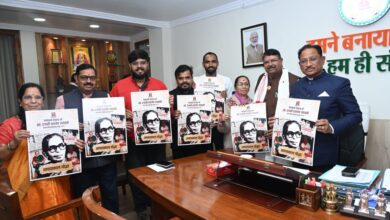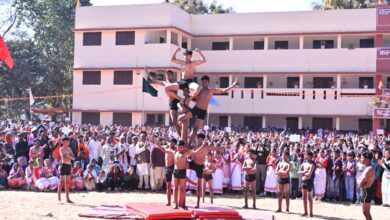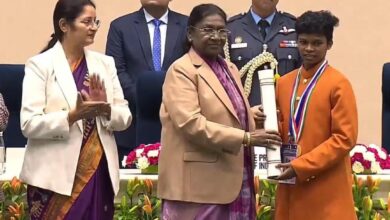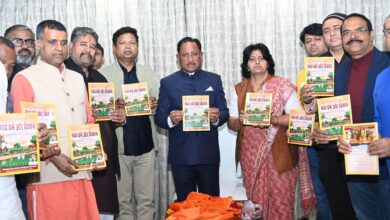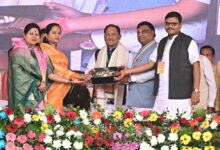Ensuring Nutritional Security : Reflections on National Nutrition Week
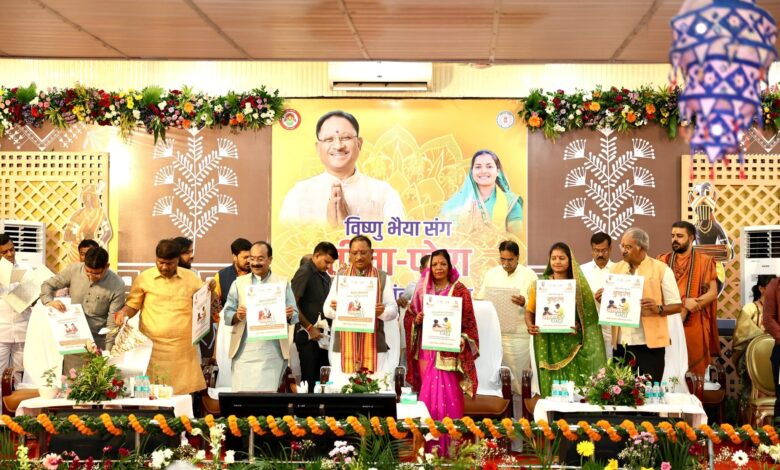
Jaiprakash Bisen & Arvind Mishra : As National Nutrition Week unfolds, it provides a timely opportunity to reflect on the status of health and nutrition in India. Despite the country’s strides in economic development, the nutritional status of significant proportion of its population remains a critical concern. The latest data from the National Family Health Survey (NFHS-5) offers a snapshot of the challenges India faces in ensuring a healthy and nutritious diets to its citizens while the Global Nutrition Report (2015) revealed the return on investment (1:16 USD) in nutrition across health and productivity. Therefore, addressing these challenges requires a multifaceted approach, involving not only better nutrition education but also advancements in science, research, and the agricultural sector.
The State of Health and Nutrition: Insights from NFHS-5
The NFHS-5 (2019-21) reveals the country’s progress in reducing undernutrition among children, with the prevalence of stunting decreasing from 38.4% in NFHS-4 (2015-16) to 35.5%. However, this numbers still indicates the limitations in access to nutrition to over one-third of children under five. Stunting, which reflects chronic undernutrition impairs both the physical and cognitive development. Wasting, which indicates acute undernutrition, remains alarmingly high at 19.3% indicating about one in five children is suffering from severe malnutrition. Anemia is another widespread concern, with 57% of women aged 15-49 years and 67.1% of children aged 6-59 months affected. Anemia, primarily caused by iron deficiency, poses serious health risks, including impaired cognitive and physical development in children and increased maternal mortality during childbirth. The survey also highlights a growing paradox: while undernutrition persists, there is also an increasing prevalence of overweight and obesity. Among adults, 24% of women and 22.9% of men are now classified as overweight or obese, leading to a rise in non-communicable diseases (NCDs) such as diabetes and heart disease. This dual burden of malnutrition—where undernutrition and overnutrition coexist—presents a complex challenge for policymakers and health professionals alike.
Challenges in Accessing Nutritious Diets
The nutritional challenges are closely associated with the socio-economic status of households. Low income levels, particularly in rural areas, limit access to a diverse and balanced diet. Many families, especially those living below the poverty line, rely on inexpensive, calorie-dense foods that lack essential nutrients. The rising cost of nutritious foods, coupled with inflation and supply chain disruptions, further exacerbates this issue. Additionally, prevalence of significant gap in nutrition education, particularly in rural and economically disadvantaged areas adds to the challenge. Many people lack awareness of the importance of a balanced diet and the role of different food groups in maintaining health. This lack of knowledge often leads to poor dietary choices, further contributing to malnutrition. Moreover, gender-based disparities in food distribution within households also keeps away the women and children from receiving adequate nutrition.
Path to Nutrition and Good Health
Addressing the nutritional challenges requires a comprehensive approach that includes economic, educational, and policy interventions. There are three ways to enhance the availability of nutritious diets such as food fortification, medical supplementation, and biofortification. On improving the access to the nutritious diets, dietary diversification and improved household income are one of the most effective ways to improve access to nutritious foods which can be achieved through inclusive economic growth, job creation, and skill development, particularly in rural areas. Diversified agriculture and food biofortification are key to ensure the stability in the availability of nutritious diets while in utilization front, improved hygiene and sanitation coupled with improved infrastructure are crucial to enhance the nutritional outcomes.
Additionally, nutrition education is crucial for empowering individuals and communities to make informed dietary choices. Educational programs may be used as a tools to address the challenges by raising awareness about the importance of dietary diversity and the nutritional value of different foods. Such programs should particularly target women, who play a central role in household nutrition. Initiatives like the Poshan Abhiyaan (National Nutrition Mission) can be instrumental in spreading this knowledge and encouraging healthier eating habits.
Further, the government schemes aimed at improving nutrition, particularly for vulnerable populations and programs like the Public Distribution System (PDS), Mid-Day Meal Scheme, and Integrated Child Development Services (ICDS) are vital in ensuring food security and improving nutritional outcomes. However, these programs must be continuously monitored and adapted to meet the evolving needs of the population. For instance, the PDS could be expanded to include a wider variety of nutrient-rich foods such as pulses, millets, and fortified foods.
Role of Agricultural Sector in Strengthening Nutrition
Promoting the diversity from farm to plate is essential for desirable nutritional outcomes and agriculture is the lynchpin to ensure the availability of nutritious foods. A diversified crop production system—one that includes a variety of fruits, vegetables, pulses, and millets—significantly enhance dietary diversity and improve nutrition security. The National Agriculture Research and Education System (NARES) through its network of ICAR-Institutes and State Agricultural Universities works at the grassroot level to improve crop nutrition through biofortification. NARES in the country has developed 87 biofortified varieties in 16 crops by the year 2022 of which maximum biofortified varieties are available for wheat (28), Maize (14), Pearl Millet (9), Rice (8), Mustard (6) and remaining in 11 crops. Additionally, a few biofortified crop varieties have also been released by honourable PM among 109 released crop varieties at ICAR-Indian Agricultural Research Institute, New Delhi. Further, many of these varieties have been biofortified with more than one nutrients. In terms of nutrients, maximum emphasis have been given to zinc, iron and protein biofortification.
These biofortified crops are critical in combating malnutrition, particularly in rural areas where nutrient deficiencies are most prevalent. In this context, ICAR’s role extends beyond research; it also focuses on the distribution of seeds of these nutritious crops to farming households across the country. This initiative is particularly significant, as farming households constitute a large portion of India’s population and are often the first consumers of their produce. By providing these households with seeds of biofortified crops, ICAR is helping to ensure that they have access to nutritious food, thus contributing to the broader goal of national nutrition security.
Significance of Nutri-Education, Science, and Policy
Addressing the nutritional challenges in India requires a comprehensive approach that goes beyond simply providing access to food. It necessitates a deep understanding of the factors that influence dietary choices, the role of scientific advancements in enhancing food quality, and the importance of effective administrative frameworks in implementing nutrition policies. Nutri-education, science, and effective policy are three pillars that must work in tandem to ensure that the population not only has access to food but also to diets that are balanced, diverse, and nutritious.
Nutri-education
Nutrition education is essential for empowering individuals and communities to make informed dietary choices that lead to better health outcomes. In many rural and economically disadvantaged areas of India, a lack of awareness about the importance of a balanced diet results in poor dietary practices, contributing to undernutrition, micronutrient deficiencies, and a rise in non-communicable diseases like diabetes and hypertension. Educating women, who play a key role in household nutrition, is particularly impactful in improving the health of entire families. Initiatives like the Poshan Abhiyaan focus on enhancing nutritional knowledge and practices at the grassroots level, particularly for pregnant women, lactating mothers, and young children, helping to break the cycle of malnutrition. Nutri-education should be community-specific, considering local dietary habits and cultural practices, and can be effectively disseminated through village workshops, school programs, and local health workers. Incorporating nutrition education into the school curriculum is also vital, as it helps children and adolescents develop lifelong healthy eating habits.
Science
Scientific research plays a pivotal role in addressing the complex challenges of nutrition and food security. Innovations in agricultural science, food technology, and nutritional science are essential for improving the quality, availability, and accessibility of nutritious foods.
One of the most significant scientific advancements in recent years is the development of biofortified crops—varieties that are enriched with essential micronutrients like iron, zinc, and vitamin A. These crops are especially important in regions where deficiencies in these nutrients are prevalent. Studies have also highlighted the nutritional benefits of indigenous crops such as millets, pulses, and traditional vegetables. These crops are not only nutrient-dense but also more resilient to climate change, making them ideal for sustainable agriculture. Promoting the cultivation and consumption of these crops can help diversify diets and reduce the reliance on relatively less nutritious staple foods like rice and wheat.
Further, science has made a significant impact is in food fortification and supplementation. Fortification involves adding essential vitamins and minerals to common foods like salt, flour, and oil, helping to address widespread nutrient deficiencies. For example, the fortification of salt with iodine has been a successful public health intervention in reducing the prevalence of iodine deficiency disorders. Ongoing research and development in this area are crucial for expanding the range of fortified foods available to the population.
Advancements in nutrition science are also paving the way for personalized nutrition—an approach that tailors dietary recommendations based on an individual’s genetic makeup, lifestyle, and health status. While this is still an emerging field, it has the potential to revolutionize how we approach nutrition, moving from a one-size-fits-all model to more customized interventions that can better meet the needs of diverse populations.
Policies
Effective policies are essential for translating scientific knowledge and educational initiatives into tangible outcomes. This involves not only the design and implementation of nutrition policies but also the monitoring and evaluation of these policies to ensure they achieve their intended impact.
The Indian government has launched several programs aimed at improving nutritional outcomes, such as the Mid-Day Meal Scheme, the Integrated Child Development Services (ICDS), and the Public Distribution System (PDS). These programs are crucial for providing food security and improving the nutritional status of vulnerable populations, particularly children, pregnant women, and lactating mothers. However, the success of these programs depends on their effective implementation, which requires strong administrative structures and efficient resource allocation.
Moreover, nutrition is a cross-cutting issue that requires coordination among various government ministries and agencies, including those responsible for agriculture, health, education, and social welfare. Ensuring that these ministries work together effectively is essential for addressing the multifaceted nature of malnutrition. For example, the integration of nutrition education into health services, or the inclusion of nutrient-rich foods in agricultural programs, requires coordinated efforts at both the central and state levels.
Further, a robust monitoring and evaluation mechanisms are necessary to assess the effectiveness of nutrition programs and to identify areas where improvements are needed. This includes tracking nutritional outcomes, assessing the reach and impact of nutrition education campaigns, and evaluating the nutritional quality of food distributed through government schemes. Data-driven decision-making, supported by accurate and timely information, is critical for the continuous improvement of nutrition policies and programs.
The involvement of the private sector through public-private partnerships (PPPs) can also play a significant role in improving nutrition outcomes. For instance, collaborations between government agencies and food companies can lead to the development and distribution of fortified foods, or the promotion of healthier food options in the market. Effective administration of these partnerships ensures that they align with public health goals and benefit the broader population.
Conclusion
National Nutrition Week serves as a critical reminder of the ongoing challenges in ensuring that all Indians have access to a healthy and nutritious diet. The insights from NFHS-5 highlight the need for a coordinated approach that includes economic, educational, and policy interventions, as well as advancements in agricultural research and development. As we continue to address these challenges, it is essential that all stakeholders—government, civil society, the private sector, and communities—work together to build a healthier and more nourished India. By doing so, we can pave the way for a future where every individual has the opportunity to thrive and reach their full potential.
Jaiprakash Bisen is Scientist, Indian Council of Agricultural Research and Arvind Mishra is Public Policy Analyst

